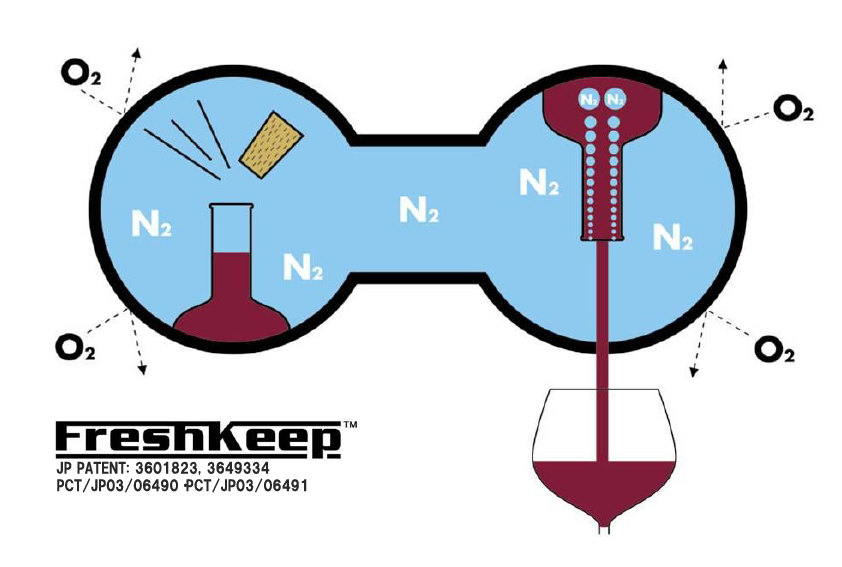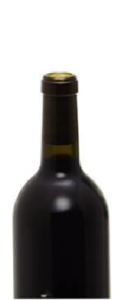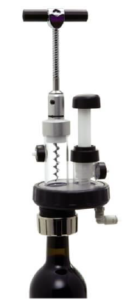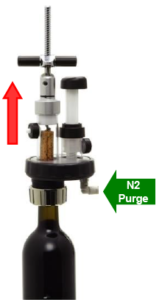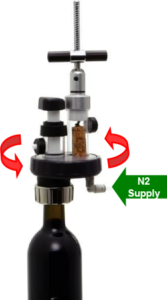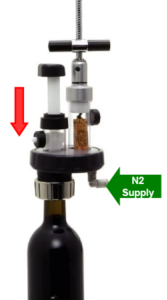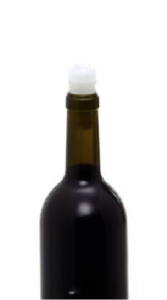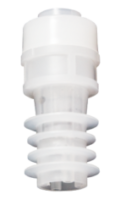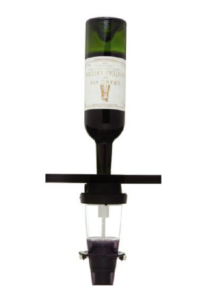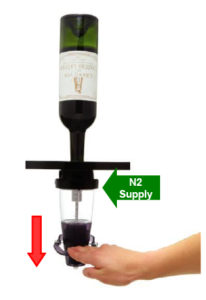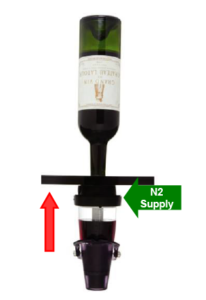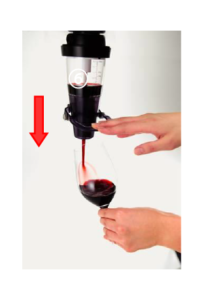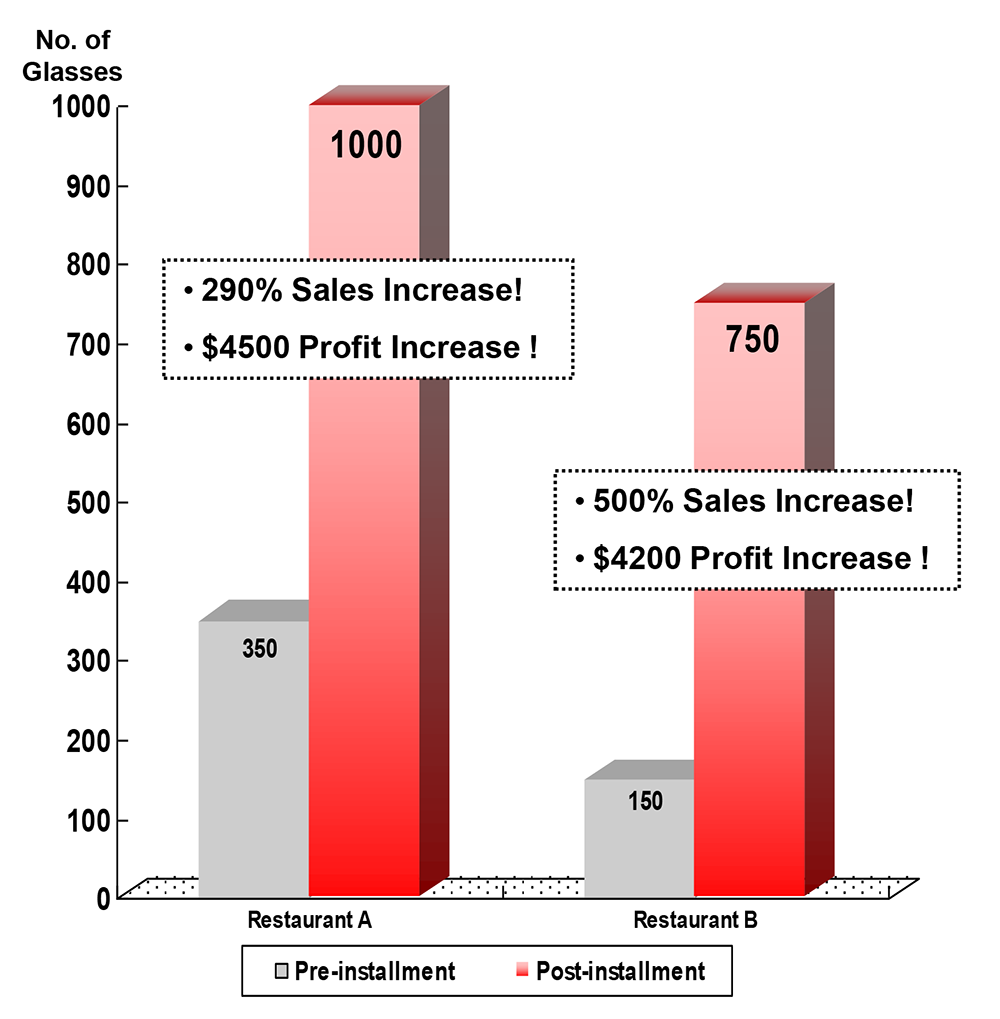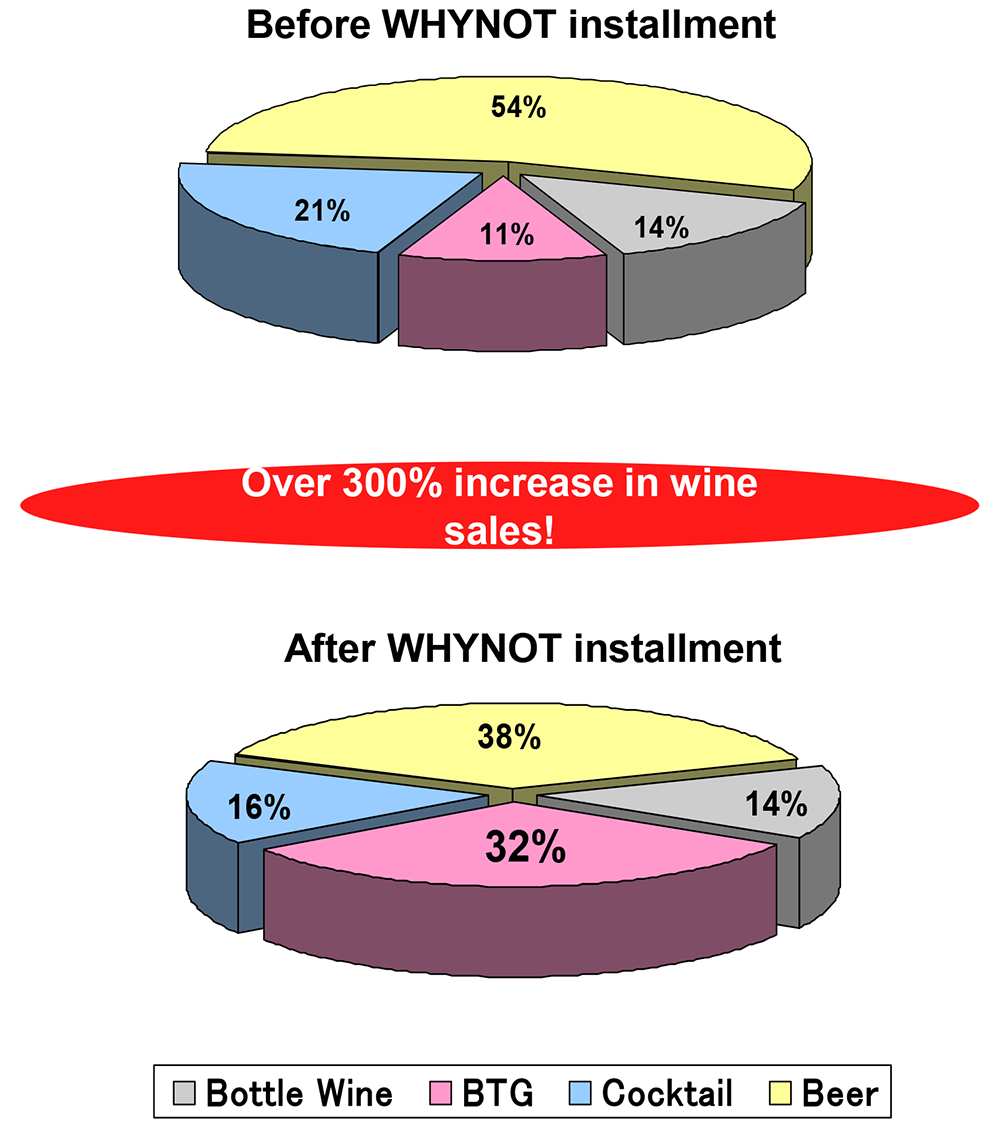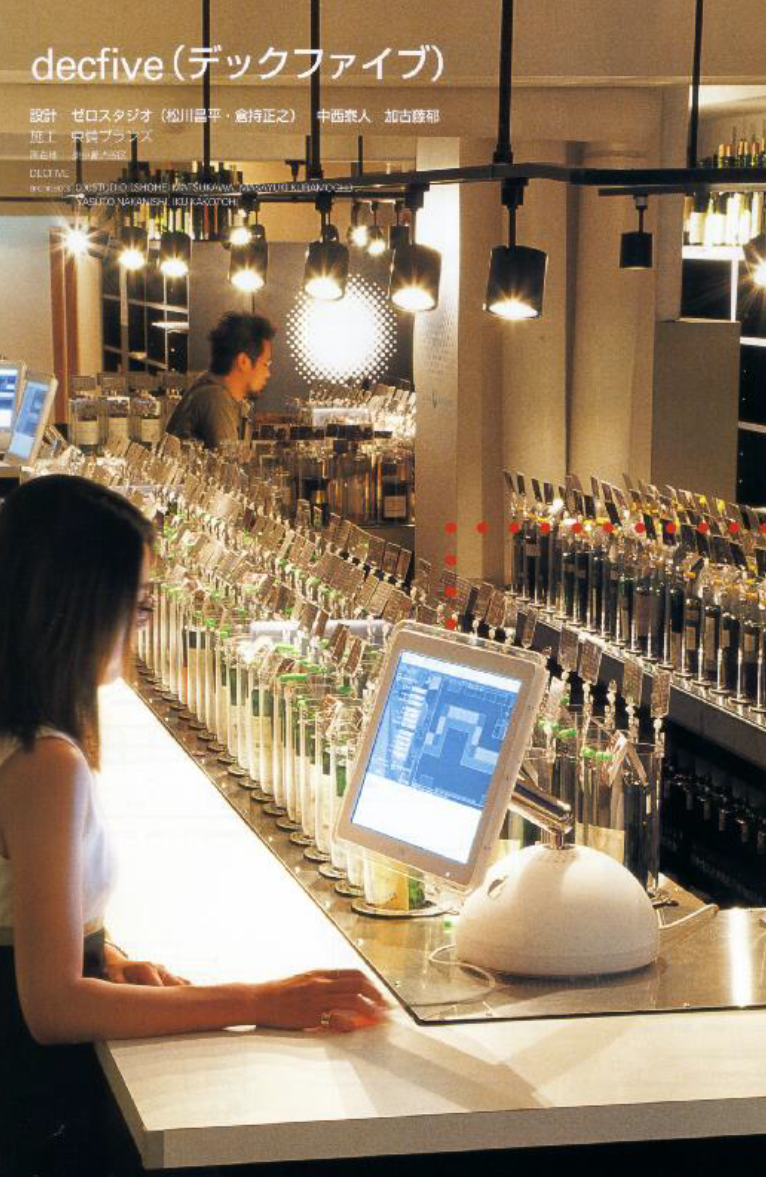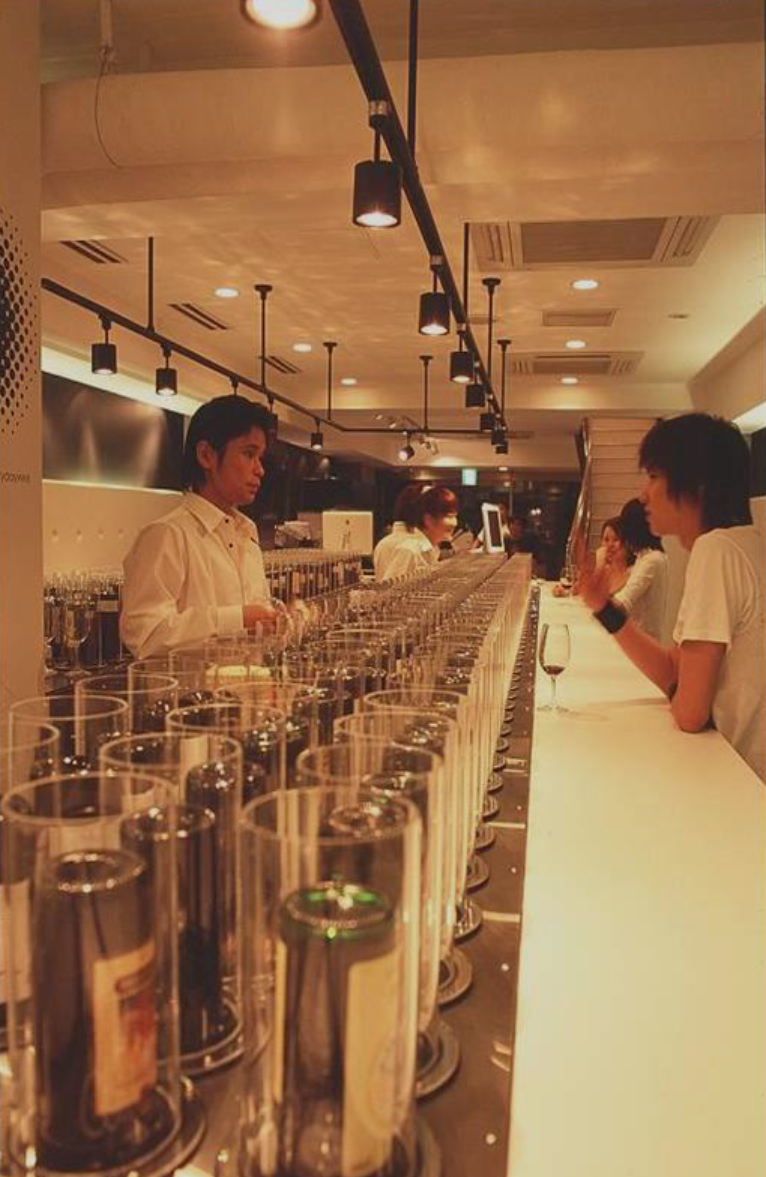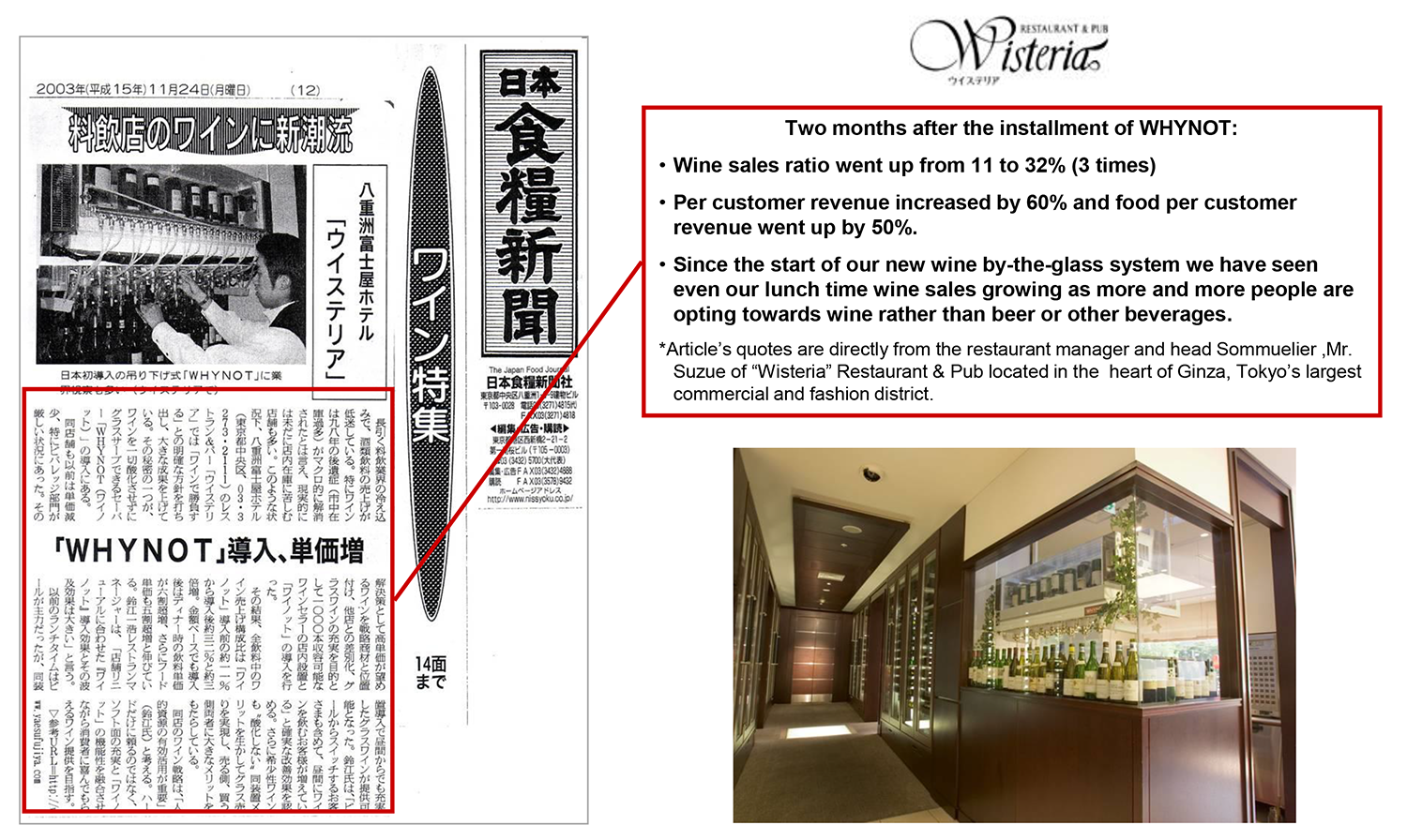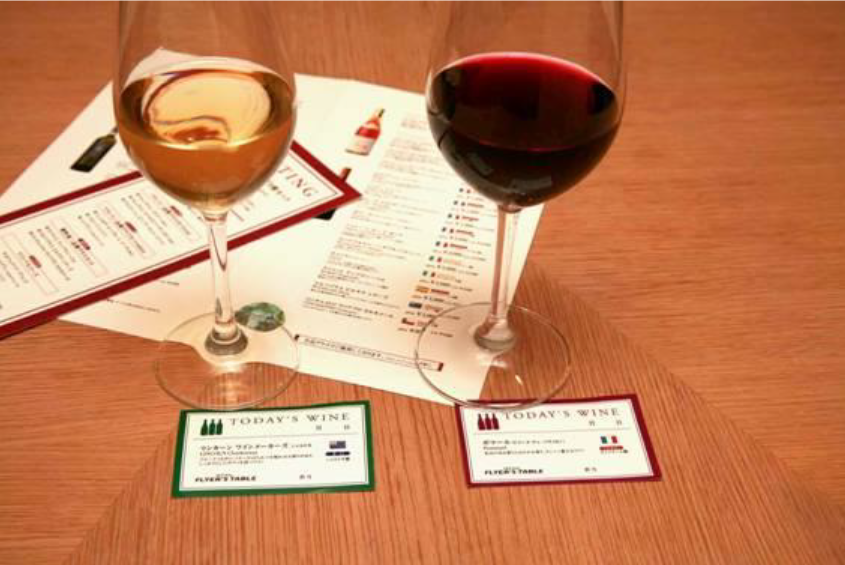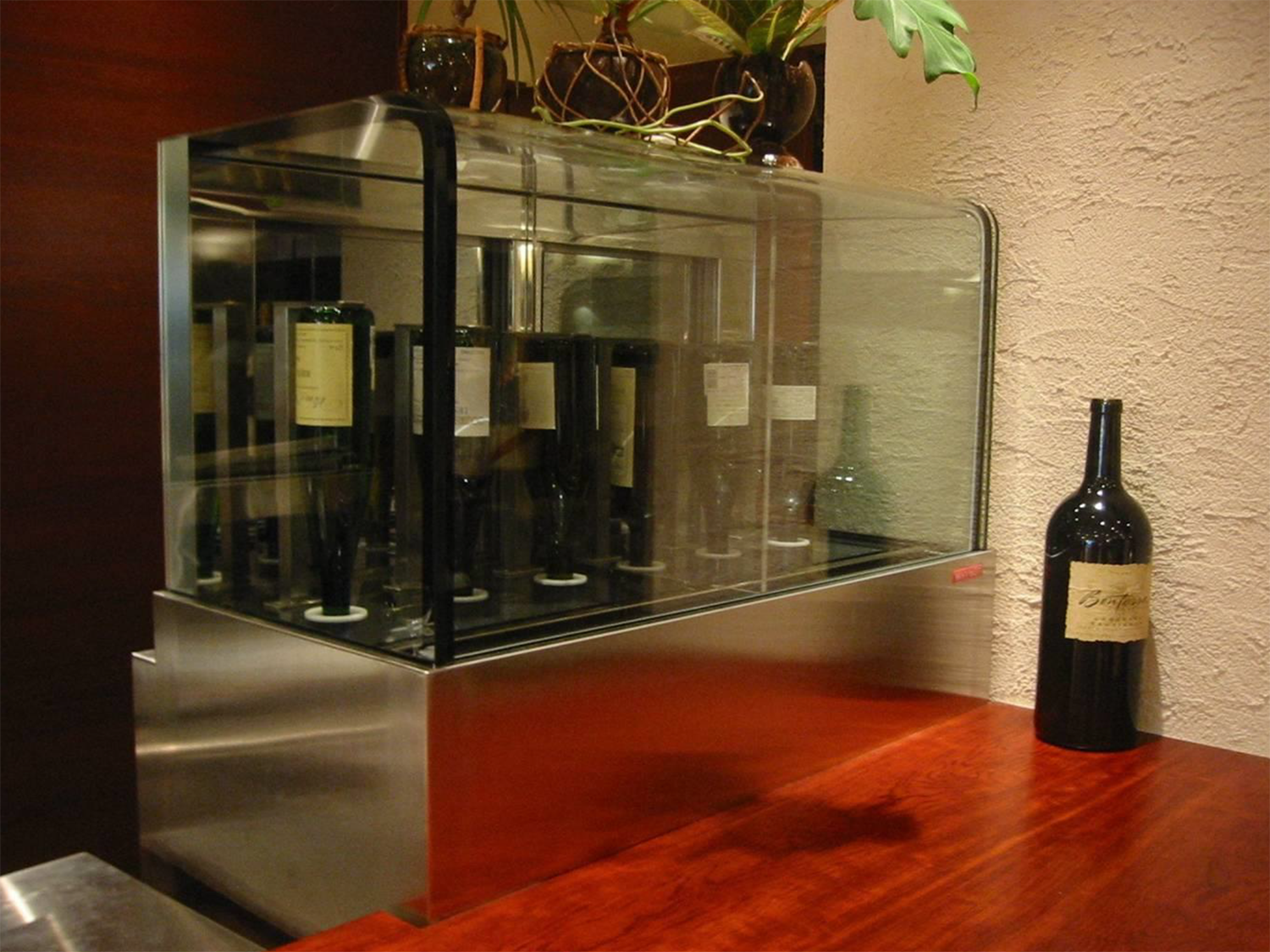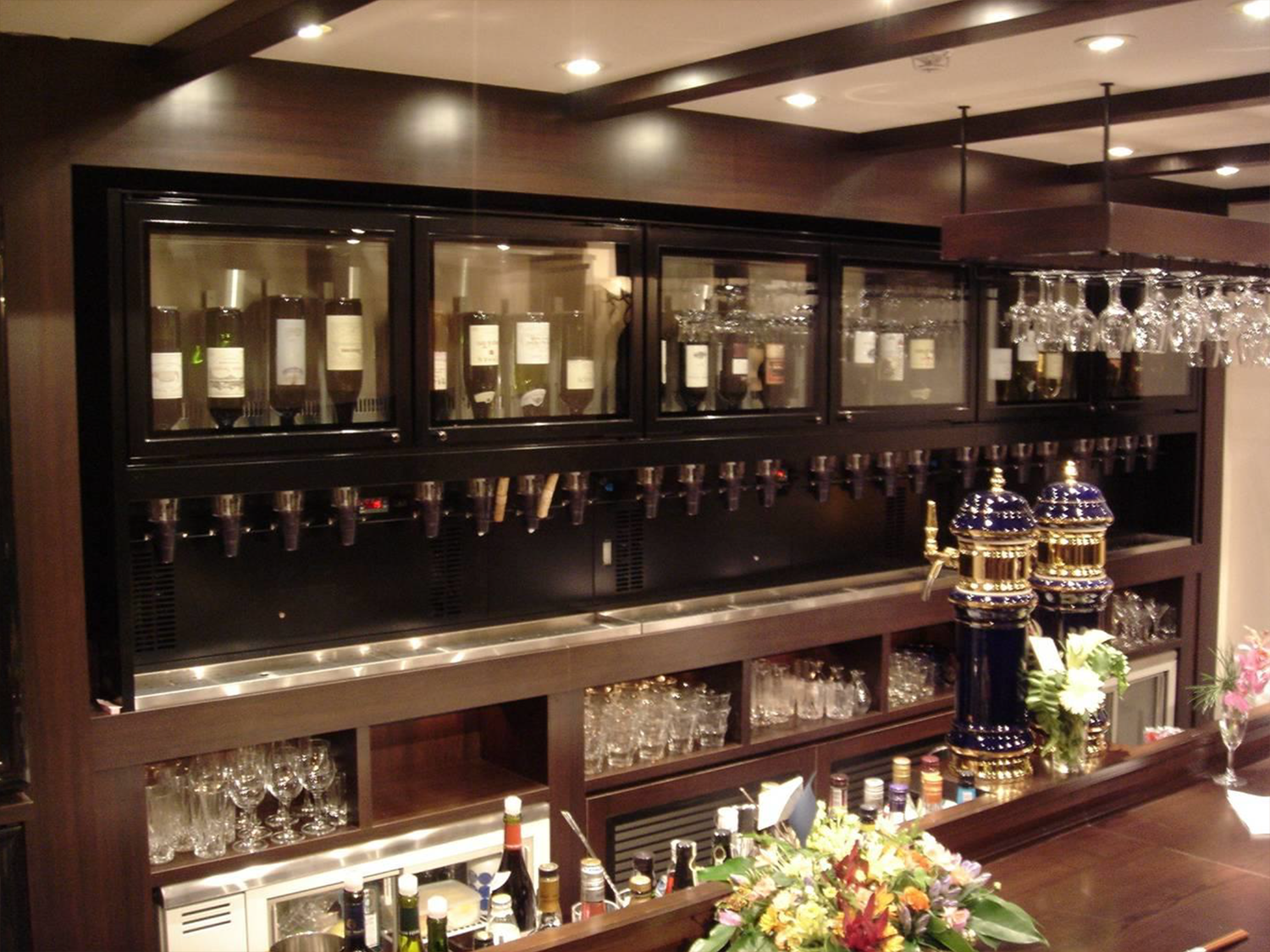Who We Are
SANDEN: Partnering with Nitrogen”
- SANDEN is the developer and patent holder of technologies that utilize the
unique anti-oxidizing properties of the inert gas nitrogen to keep food and beverages fresh - Founded in February 2002 and based in Tokyo, Japan
- In summer 2002, FreshTech opened DECFIVE, a by-the-glass wine bar providing over 400 wines all by the glass
- In spring 2004, commenced sales of the “WHYNOT” wine saver and dispenser
system for foodservice market; now holds a more than 80% share of the commercial wine saver/dispenser market in Japan
(Source: JMA [Japan Management Association] Research Institute) - Currently in development and test phase for coffee and other applications
- Recently developed and patented unique nitrogen/oxygen gas separation technology using low-pressure sources

